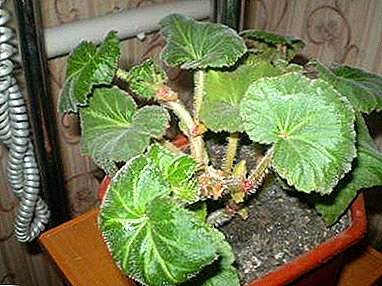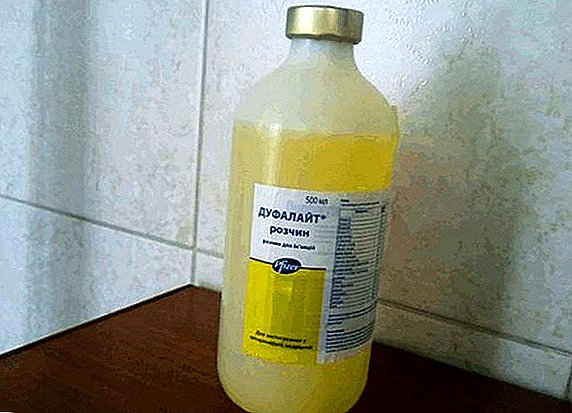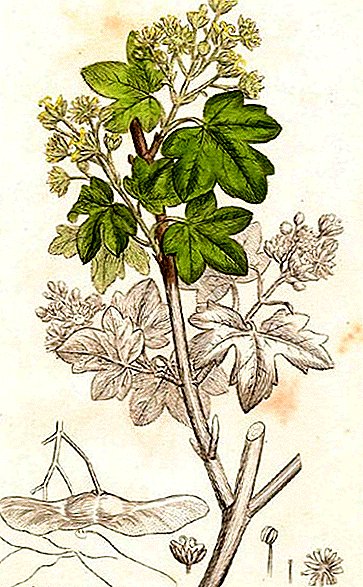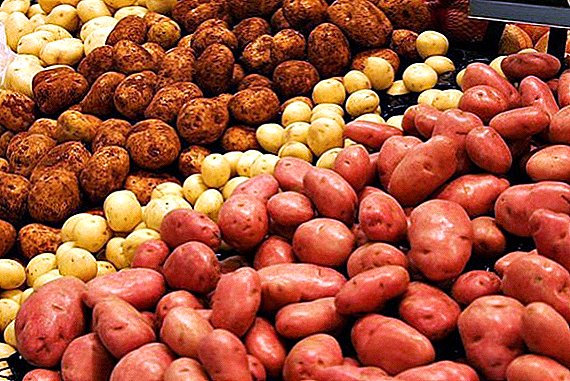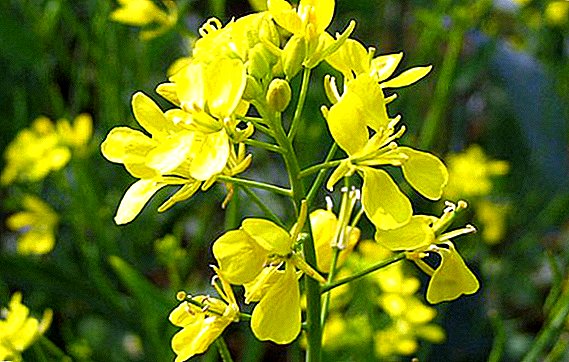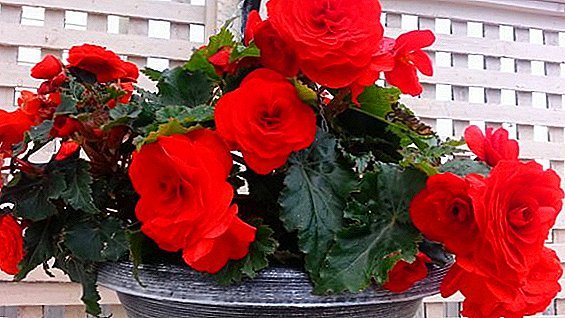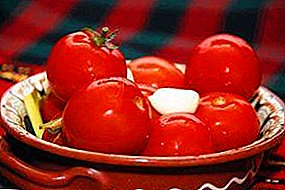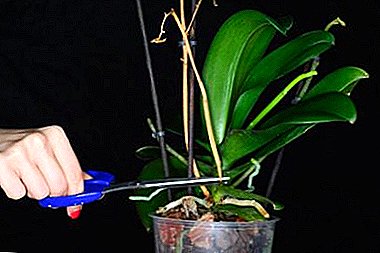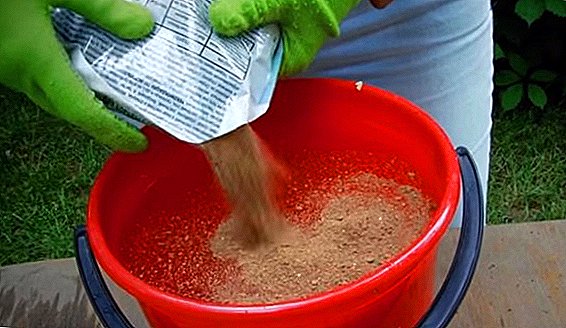 The gardener's season season is devoted to the cultivation of berries, fruits and vegetables in his plot. But an invasion of hordes of pests can stand in the way of obtaining an excellent harvest. The desire to get not only a big, but also a chemically pure crop prompts the use of folk recipes to protect cultural plantations. These are decoctions of herbs and vegetables; many of the recipes that have been tested for several decades have insecticidal or fungicidal properties.
The gardener's season season is devoted to the cultivation of berries, fruits and vegetables in his plot. But an invasion of hordes of pests can stand in the way of obtaining an excellent harvest. The desire to get not only a big, but also a chemically pure crop prompts the use of folk recipes to protect cultural plantations. These are decoctions of herbs and vegetables; many of the recipes that have been tested for several decades have insecticidal or fungicidal properties.
Tobacco dust
For the use of tobacco and tobacco dust, there are many recipes, some of them indicate not tobacco, but its type - tobacco.
Option 1:
The use of tobacco dust in gardening against pests that live on fruit trees. To do this, populated with pests insects pollinate tobacco dust on the leaf. You can save a tree only with tobacco dust, but to enhance the effect, it is usually used with lime fluff in equal parts.  Option # 2:
Option # 2:
In the period of the mass summer of the nursery and the aphid invasion of apple orchards, it is recommended to fumigate the garden. It is advisable to carry out the procedure in calm and calm weather in the evening. Dry chips are set on fire in the iron tank. When the fire breaks out, tobacco dust is poured into the fire, which contributes to the appearance of suffocating puffs of smoke with a specific smell. The container in turn is brought under an insect-infested tree for half an hour.  Option # 3:
Option # 3:
To prepare the tincture is taken one liter of dry tobacco dust or ground tobacco, which must be mixed with 10 liters of boiling water and stand for a day. 
Important! Vegetables do not like monoplanting, need an annual crop rotation. If you change the location of the beds, the vegetables will grow larger and the bed will not be populated by pests of this crop wintering in the soil. After the tomatoes, you can sow the bed with dill, and after the cucumbers, plant the cauliflower.
Ash
Ash is used to prepare insecticides in dry form and in the form of solutions.
For the convenience of plant growers, here are a few detailed recipes.
Recipe # 1.
Application of tincture - the fight against aphids and caterpillars on cabbage. To prepare the tincture, a glass of wood ash is added to 10 liters of cold liquid, the solution is thoroughly shaken and left to infuse for 12 hours. Usually this procedure is done in the evening, in the morning after straining, the solution is ready for use. Cabbage beds are treated early in the morning, just after dawn.  When processing cabbage leaves are raised, so that the solution fell on both sides of the sheet. Spraying spend several days in a row.
When processing cabbage leaves are raised, so that the solution fell on both sides of the sheet. Spraying spend several days in a row.
Recipe # 2.
A glass of wood ash is poured with one liter of water and simmered for 20 minutes. Hot broth cools, infused for 10 hours. Prepared cold broth is filtered, poured into a large bucket and topped up with 9 liters of water. A well-mixed decoction is ready to fight against aphids and to spray the trees with ashes. Recipe # 3.
Almost every summer you can watch currant bushes in white, mealy patina. This is called powdery mildew. Spraying diseased bushes with soapy water can help in the fight against it:
- The first spraying - 3 parts of water are added to one part of the ash, all this is mixed and boiled for 60 minutes.
- The second treatment is carried out after the formation of small berry ovaries on currants. To do this, take a glass of ash and mix it with a bucket of water, everything boils for 70 minutes.

Did you know? Dusting the plants with dry ash helps in the fight against the cruciferous flea on cabbage beds.
Sunflower oil
Vegetable oil from sunflower is added by gardeners to home-made insecticidal tinctures, as an adhesive and flavoring, when struggling with adult insects. Vegetable oil envelops the airways and the wings of a pest that escaped from an insecticidal trap; this insect will certainly die over time.  Vegetable oil is also added to liquid aromatic traps, arranged by gardeners at the foot or on the branches of fruit trees.
Vegetable oil is also added to liquid aromatic traps, arranged by gardeners at the foot or on the branches of fruit trees.
Kefir
Kefir is a fermented milk product, with its help gardeners also struggle with the manifestation of fungal infections in solanaceous crops. In kefir are lactic acid bacteria and fungi, they inhibit fungi with phytophthora spores. Kefir bacteria themselves serve as a fertilizer for cucumbers.
If it is visually visible that cucumber beds are oppressed and the plants do not grow well, their leaf covering starts to turn yellow, then to stop leaf dying, the two-liter kefir package is poured into 10 liters of water. This mixture is shaken and cucumber leaves are sprayed with a homemade, grassy broom.  An excellent sheet top dressing for adult tomato bushes is such a talker: liter bag of kefir diluted in a bucket of water.
An excellent sheet top dressing for adult tomato bushes is such a talker: liter bag of kefir diluted in a bucket of water.
As a preventive measure against the manifestation of phytophtoras, tomato seedlings are processed in the stage of four true leaves with this solution: 0.5 l package of kefir is taken, 1 tbsp is added to it. Coca-Cola. All this is poured 10 liters of water and stirred. The solution is prepared.
Important! Plants can provide protection and patronage to other types of garden crops, one has only to pick up herbs or vegetables that are compatible with each other. They are planted on the same bed, in mixed plantings and they scare away the pests from their neighbor with their scent. An example of such a successful neighborhood: cabbage and marigolds, marigolds scare the whitefish, carrot and onion to frighten away carrot and onion flies, cucumbers and dill from a neighbor in the garden beds.
Milk serum
Gardeners and gardeners use the serum remaining during the fermentation of sour milk as one of the measures in the fight against late blight. Serum has established itself as a successful fighter against fungal diseases in tomatoes and grapes. Whey contains many mineral supplements and fertilizes grown crops. Serum is applied by spraying over the sheet. Usually it is not sprayed through a sprayer, but applied to the vegetative mass of plants by irrigating over the leaf.  Serum is used in the form of a water solution:
Serum is used in the form of a water solution:
- for feeding under the plant root - one liter of whey is added to 10 liters of water;
- for foliar application, a solution of the same concentration is made; the leaves of the culture are sprayed with it.
There are several similar recipes, each of which uses serum.
Recipe # 1.
For such feeding you need to use a large old barrel or another deep container. 2/3 of chicken manure shovels are poured with 2-3 buckets of water, half a bucket of wood ash, 500 g of fresh, non-frozen yeast are added to the same place. The mixture is stirred, tightly closed and left for 10-15 days to ferment. The finished brew is very concentrated and needs to be diluted with water.
Yeast is used as a fertilizer for tomatoes, peppers, cucumbers.
When watering, 1 liter of concentrate is taken under the root of the fertilized crops and added to a ten-liter bucket of pure water. When fertilizing it is necessary to take into account that for each fertilized plant a rate of 0.5 liters of the already diluted solution should be used.
Recipe # 2.
A large 200-liter barrel half-capacity filled with freshly mowed grass, there is poured a bucket of wood ash, add a three-liter jar of whey.  Barrel to the top is poured with water, covered with a lid and left to ferment. Barrel set in a sunny place. The fermentation process is considered completed in 14-20 days. For fertilizer, the resulting slush is diluted one to one with pure water. On one plant you need 0.5 liters of diluted solution for feeding under the root.
Barrel to the top is poured with water, covered with a lid and left to ferment. Barrel set in a sunny place. The fermentation process is considered completed in 14-20 days. For fertilizer, the resulting slush is diluted one to one with pure water. On one plant you need 0.5 liters of diluted solution for feeding under the root.
Recipe # 3.
On 3 l of whey add seven and a half tablespoons of honey, shaken and insist hour. Next, add 20 drops of iodine and 500 g of ash. The solution is again mixed and left for two days to insist. Apply as root dressing, without diluting. This solution is very effective in preplant preparation of seeds for sowing.
Garlic
With the help of garlic, plant growers effectively fight against the domination of aphids, fruit mites, and suckers. Also, solutions of garlic are effective in the form of natural fungicides on tomatoes, peppers, and grapes.  Option 1.
Option 1.
This garlic tincture is used for spraying plants from leaf pests. To prepare such a tincture, two large heads of garlic are passed through a garlicker, this mass is added to a bucket of cold water. The liquid is well mixed and left to infuse.
A day tincture is ready. In order to pour the solution into the sprayer, it is carefully filtered. The liquid must be free of impurities, otherwise the sprinkler will not work normally.
Option # 2.
Leaf rust, aphid or spider mites also react negatively to treatment with garlic extracts.
Prepare such a solution can be as follows: six large heads of garlic put pressure on the garlic box, pour 5 liters of water, shake. After stirring, the resulting water mixture is filtered through cheesecloth, carefully squeezing the thick. After that, the marc of minced garlic is again poured with water, shaken and drained again.  Both the resulting extracts of garlic pulp is poured into a total container and added to 8-9 liters of water. The extract obtained plants are processed in cloudy weather or in the evening. If the first treatment is not enough, then the next week the next spray is carried out on the sheet.
Both the resulting extracts of garlic pulp is poured into a total container and added to 8-9 liters of water. The extract obtained plants are processed in cloudy weather or in the evening. If the first treatment is not enough, then the next week the next spray is carried out on the sheet.
Option # 3.
Another very effective infusion against aphids and spider mites made from garlic:
Three four large garlics are taken, ground into mush and placed on the bottom of a three-liter jar. Then the bank is poured to the neck with water. Capacity put in a warm and dark place for a week. The result is a concentrate. In one bucket of water pour 50 g of concentrate, stir and use garlic infusion from aphids for the intended purpose.
Tomato Topper
The smell of tomato stems do not like such insects: aphid, raspberry bugs, cruciferous flea, apple moth, moth, mites.
Option 1. Tincture is prepared after staving tomato beds. 5 kg of tomato stalks are taken, 10 liters of water are poured, infused week. This solution together with the soaked tomato stems boil for half an hour over low heat. Leave until complete cooling for several hours.  From the cooled broth, take out the green boiled stems, filter the broth itself. It is ready to eat. The finished insecticide is poured into glass containers; it retains its qualities throughout the year. Before applying the solution, it must be diluted with water in a ratio of 1: 2 and 50 g of any detergent added to adhere the insecticide to the sheet.
From the cooled broth, take out the green boiled stems, filter the broth itself. It is ready to eat. The finished insecticide is poured into glass containers; it retains its qualities throughout the year. Before applying the solution, it must be diluted with water in a ratio of 1: 2 and 50 g of any detergent added to adhere the insecticide to the sheet.
Option # 2.
Tomato tops are used to make poisonous tinctures from cabbage shovels and sawfly larvae. Dry tomato stalks, harvested last fall, are ground finely chopped. Mixed with a liter of water and insist for four hours, then filter and add 9 liters of water. Vegetable plantations are treated twice with a ten-day break.
Did you know? Potatoes were brought to Europe in the 15th century and for a long time remained a little demanded root crop. In the superstitious Middle Ages, people called potatoes satanic apple, as the tubers of irregular shape could have similarities with the figures of people or animals. And in South America, shamans really used human-like potatoes for their witchcraft rituals.
Potato tops
Elevated leaf mass of potatoes used for the manufacture of poisonous infusions and decoctions of garden pests. Broths made from potato tops are long-known folk remedies for the garden.  We prepare the decoction as follows: one and half kilograms of fresh potato tops (not infected with blight) or 0.5 kg of dried potato stalks are taken, 10 liters of boiling water are poured. Insist this mixture during the day, then filter and add 50 g of liquid soap solution.
We prepare the decoction as follows: one and half kilograms of fresh potato tops (not infected with blight) or 0.5 kg of dried potato stalks are taken, 10 liters of boiling water are poured. Insist this mixture during the day, then filter and add 50 g of liquid soap solution.
Potato stalks are quite a toxic substance, so the preparation of a decoction should not exceed the content of green potato masses, otherwise burns can appear on the treated plants.
Infusion is ready to eat, they are treated with berry bushes, vegetable beds, fruit trees.
Onion Husk
Onion peel is a natural, organic fertilizer for plants and at the same time, an insecticide:
- A little onion peel, laid when planting tomatoes in open ground, will significantly increase the yield of tomatoes.
- Old cucumber lash, you can cheer up and rejuvenate, arrange them a shower or root dressing from broth onion peels. Such supplements are useful for a cucumber weekly.
- Watering with onion decoction of earthen soil mixture prepared for spring sowing of seeds for seedlings will disinfect it and neutralize pathogenic microflora living in garden soil.
- When planting potatoes, a handful of onion peel can be added to each hole, which will scare away the larva of the May beetle and Medvedka.
 To prepare the infusion, you need to take one part of dry onion peel and pour it with two parts of the liquid. Tincture is in the dark for three days. It should be periodically shaken. The prepared infusion is filtered, a little laundry soap is added to it. Before use, the infusion is diluted with one to two pure water. Processing such infusion enough to remove pests from the garden.
To prepare the infusion, you need to take one part of dry onion peel and pour it with two parts of the liquid. Tincture is in the dark for three days. It should be periodically shaken. The prepared infusion is filtered, a little laundry soap is added to it. Before use, the infusion is diluted with one to two pure water. Processing such infusion enough to remove pests from the garden.To prepare a decoction of onion peel, the husk is taken from 3-4 kg of onions, placed on the bottom of an enamelled bucket and filled with water to the top. Boil a minute and turn off. Cooling down. The resulting concentrate must be diluted. For dilution: 8 liters of liquid are added to 2 liters of concentrate.
Important! Watering the leaf with this cold onion broth is very respectful for planting cucumbers and zucchini, carrots and tomatoes. A few days after irrigation was carried out on a sheet, it was visually seen how the leaf mass of the fertilized crops came to life.
Eggshell
Dried egg shells are used by gardeners to feed plants with calcium. To do this, it is poured into the planting pit in a crushed state when disembarking vegetable crops to a permanent place.
Simultaneously with the functions of feeding, the crushed eggshell repels the bear. Wishing to gnaw the stem of a young plant, Medvedka encounters the sharp edges of the shell, experiencing discomfort, the insect retreats.
Did you know? Egg shells are placed on the bottom of the flower pot as drainage. For indoor plants, the shell serves as both a drainage and a calcium fertilizer.
 Eggshell is used in the preparation of a very effective root dressing for indoor plants. This dressing can be used on garden plants. For its preparation, it is necessary to take crushed shells from 4-5 eggs and place them on the bottom of a liter jar, pour boiling water over the shell to the neck of the jar. Capacity tightly closed lid. The mixture is infused over the course of a week, while the jar is stirred daily. Next, the mixture is diluted with water. On 1 part of such root top dressing three parts of pure water are added.
Eggshell is used in the preparation of a very effective root dressing for indoor plants. This dressing can be used on garden plants. For its preparation, it is necessary to take crushed shells from 4-5 eggs and place them on the bottom of a liter jar, pour boiling water over the shell to the neck of the jar. Capacity tightly closed lid. The mixture is infused over the course of a week, while the jar is stirred daily. Next, the mixture is diluted with water. On 1 part of such root top dressing three parts of pure water are added.Not wanting to use chemistry in their beds, gardeners and gardeners use the experience of several generations, using in practice recipes for the destruction of pests and plant nutrition with environmentally friendly, organic preparations.


